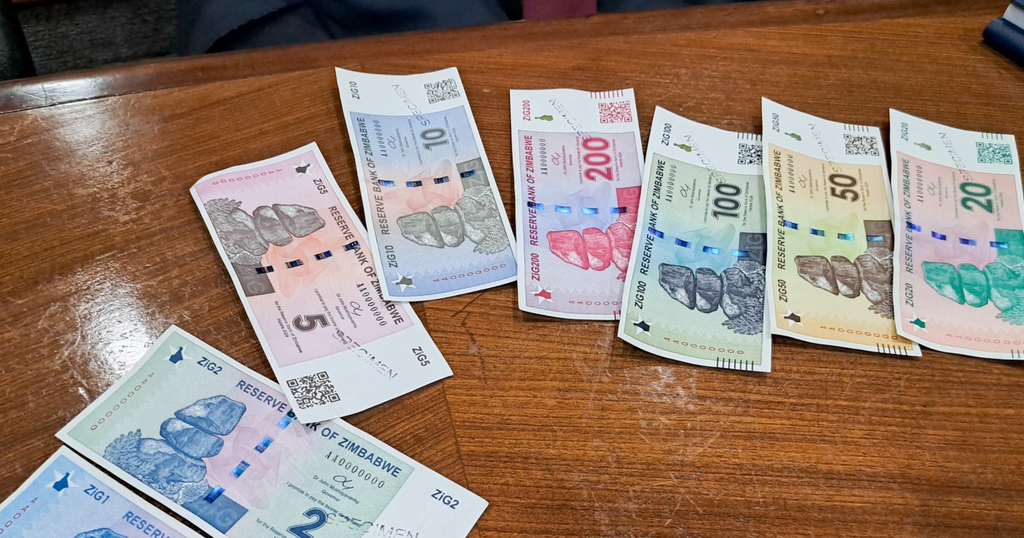Is there a secret to longevity? This health expert says 1,000% yes
In the era of social media, post-COVID, and with mental health at the forefront, a shift is taking […]

Zimbabwe’s latest attempt to stabilise its economy and regain monetary sovereignty ignited the creation of ZIG, a new gold-backed currency to unseat the dominant U.S. dollar.
ZIG was unveiled on April 5, 2024, to replace the U.S. dollar and become the primary medium for all commercial dealings within the Southern African nation.
At the launch of the new currency also known as ‘Zimb Gold’, Zimbabwe’s Reserve Bank governor, John Mushayavanhu, directed all banks to convert any US dollars in their possession, as well as those held in their vaults, into ZiG.
“With effect from today, banks shall convert the current Zimbabwe dollar balances to ZiG,” Mushayavanhu said, adding that it “will circulate with other currencies in the basket. If we implement these measures, we expect them to impact inflation.”
Fifteen days have passed since the introduction of ‘Zimb Gold,’ declared to have been in circulation since April 8. However, ZiG has not yet fully supplanted all transactions due to the government’s decision to postpone distribution until April 30.
Zimbabwean currencies have historically faced off against the US dollar, with the latter consistently emerging victorious. Will the outcome be any different when ZiG eventually takes over after a few years?
Zimbabwe’s history with the US dollar
Zimbabwe’s history with the US dollar is a complex one, marked by economic challenges and currency changes. The Zimbabwean dollar (ZWD) was introduced in 1980 to replace the Rhodesian dollar at par and was initially worth more than the US dollar in the official exchange market. In the early 21st century, the country experienced extreme hyperinflation, leading to the dramatic devaluation of the ZWD.
This resulted in three redenominations and a $100 trillion banknote issuance. The hyperinflation led to the abandonment of the ZWD in 2009. In its place, multiple foreign currencies, including the US dollar, were used for transactions. In 2016, Zimbabwe introduced bond notes and coins to address the shortage of US dollars, which were pegged to the US dollar but not accepted outside the country.
Subsequently, Zimbabwe ended a decade of official use of the US dollar in most domestic transactions, reintroducing a local currency (RTGS Dollar) that had been abandoned in 2009 due to hyperinflation in 2019. In April 2024, the RTGS Dollar was replaced with a new gold-backed currency called ZiG. Throughout this period, the US dollar has played a critical role in Zimbabwe’s economy, serving as a stable currency during times of economic turmoil.
Why did Zimbabwe switch from US dollars to ZiG?
Zimbabwe switched from the US dollar to the new gold-backed currency, ZiG, as part of its latest attempt to create a stable and reliable currency that can help alleviate the economic challenges the country has faced for the past 25 years.
The previous currency, the RTGS, had lost a significant portion of its value, and annual inflation had reached a seven-month high of 55% in March. The central bank committed to backing the amount of local currency in circulation with an equivalent value in precious minerals, mainly gold, or foreign exchange, to prevent the currency from losing value like its predecessors.
The switch also comes at a time when Zimbabwe is dealing with the effects of a serious drought, which has destroyed half of the country’s maize crop, further emphasising the need for economic stability. The ZiG is the country’s sixth attempt at introducing a revamped currency.
The current state of the ZiG
In the absence of the new currency ZiG, Zimbabweans are compelled to rely on the US dollar for their transactions. Nevertheless, Zimbabwe’s informal traders, constituting approximately 75% of the nation’s workforce, have ceased accepting the ZIMdollar, also known as the RTGS dollar, due to concerns over its depreciating value.
As reported by Africanews, an economist, Happy Zengeni explained that there happens to be inadequate or transparent measures that will push the newly introduced ZiG to thrive.
“When you introduce new measures, you will be hoping that you will bring stability and lower inflation but you need to be disciplined and sincere about the process,” economist Happy Zengeni explained. “The ordinary Zimbabwean cannot inject liquidity into the economy but capacity rests with the authorities so they need to be sincere about it.”

In the era of social media, post-COVID, and with mental health at the forefront, a shift is taking […]

With its fast speeds and revolutionary potential, 5G stands out as a noteworthy milestone in the field of […]